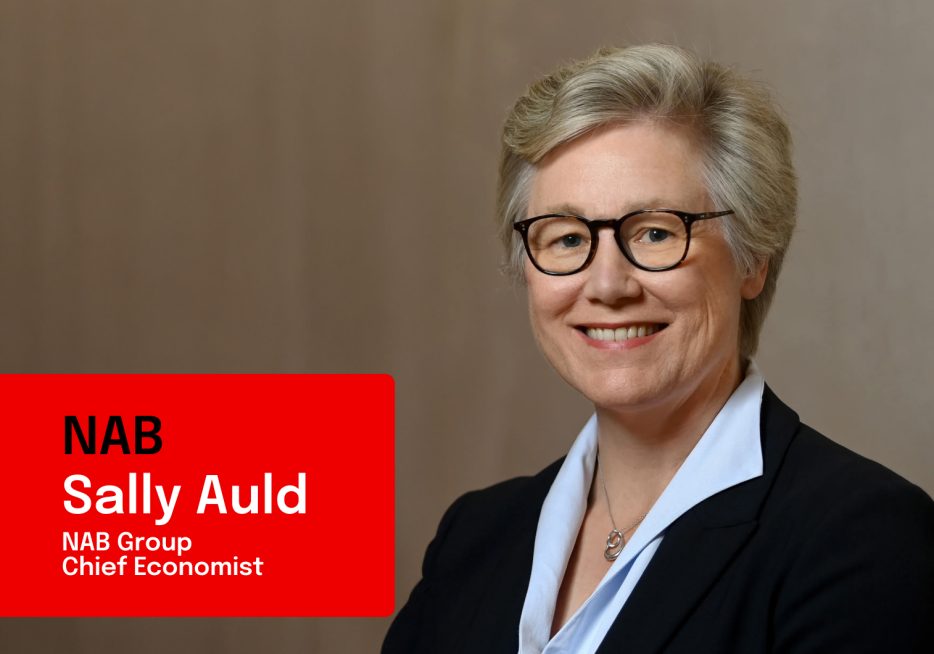We hear from NAB Group Chief Economist, as she shares her latest economic update. Watch now.


Reliability is crucial to the success of Budd Green’s family quarry business.
Reliability is crucial to the success of Budd Green’s family quarry business.
South Coast Concrete Crushing & Recycling in Nowra south of Sydney supplies road base to contractors and faces heavy penalties if it can’t fill its contracts.
“With our older equipment we were open to risk that we could have breakdowns and not be able to fulfil or meet our contract obligations and be sued,” says Green.
“We would then be in a position where we would have to purchase the material at a greater cost somewhere else to meet the supply or have those people chase us for damages for lost time or lost production.”
Green and his father, who founded the business, decided to upgrade their equipment to ensure it was more reliable and efficient. They bought three new stone crushers and three new excavators using an equipment finance facility.
Equipment finance is a way businesses can purchase new machines or vehicles and use the equipment itself as security over the loan. For many businesses it is an ideal solution because they aren’t required to use property such as homes as security or draw on their cash reserves.
Businesses can also structure their Equipment Finance Facility so it aligns with the asset life of the goods and structure repayments to suit their business’ cashflow and seasonality requirements, such as in the farming and tourism industries.
Along with increased reliability, SCCCR’s new equipment will provide savings of about 35 per cent on fuel, which is a major expense for the quarry business. These savings can then be put towards repaying the equipment finance facility.
Furthermore, as the machinery is more fuel efficient SCCCR qualified for a 0.7 percentage discount on their interest rate thanks to a government scheme to help businesses lower energy costs.
NAB and the Clean Energy Finance Corporation (CEFC) have teamed up to give interest rate discounts to eligible businesses which buy energy efficient equipment up to the value of $5 million. The concession may apply to a range of potential acquisitions, from motor vehicles to heavy plant and equipment, see the list of eligible equipment.
Along with the fuel cost savings, the new crushers are less prone to breakdowns and blockages. The old crushers used to get rocks caught in their “jaws” every few days, which would halt work for several hours while two workers toiled to unblock the machine, says Green.
The three new crushers have a hydraulic override system that can unblock the jaws in just a few minutes. And they are better suited to the harder grade rocks in Australia than the Asian-made crushers SCCCR was previously using.
Along with the crushers, SCCCR also bought three excavators.
Purchasing multiple machines from the one company is a smart strategy for a business because they benefit from maintenance synergies, such as not having to hold a wide range of spare parts or dealing with multiple service people.
Breakdowns had become an issue for SCCCR. Not only did the quarry lose time because of the breakdown itself and risk not fulfilling its contracts, there was also a delay in getting the parts needed for the repair.
“The other machines in the quarry were getting older, so to increase productivity and ensure our targets were met we needed to upgrade to newer machines that weren’t in danger of having breakdowns,” Green says.
SCCCR is a modern innovative business, but some other businesses make the mistake of holding on to old equipment for too long, when it is costing them in terms of breakdowns, maintenance and efficiency, says Mark Nightingale, Regional Equipment Finance Manager of South East NSW and ACT at NAB.
“They can sometimes find that in capital intensive businesses new business equipment gives them a technology upgrade as well as more manageable repairs and maintenance along with a reduction in downtime,” he says.
Equipment Finance can be tailored to meet individual businesses’ needs. For instance, a business which buys $2 million worth of equipment might not want to dip into their operating cash to make the $200,000 GST payment. This can be added to the loan and repaid later.
Other customers may want to delay making repayments until the new equipment is fully operational and is generating income for the business.
For Budd Green, the advantages of equipment finance are simple. “We want to meet the demands of our clients and give them confidence that we’ll be reliable with our material supplies,” he says.
More from NAB:
© National Australia Bank Limited. ABN 12 004 044 937 AFSL and Australian Credit Licence 230686.